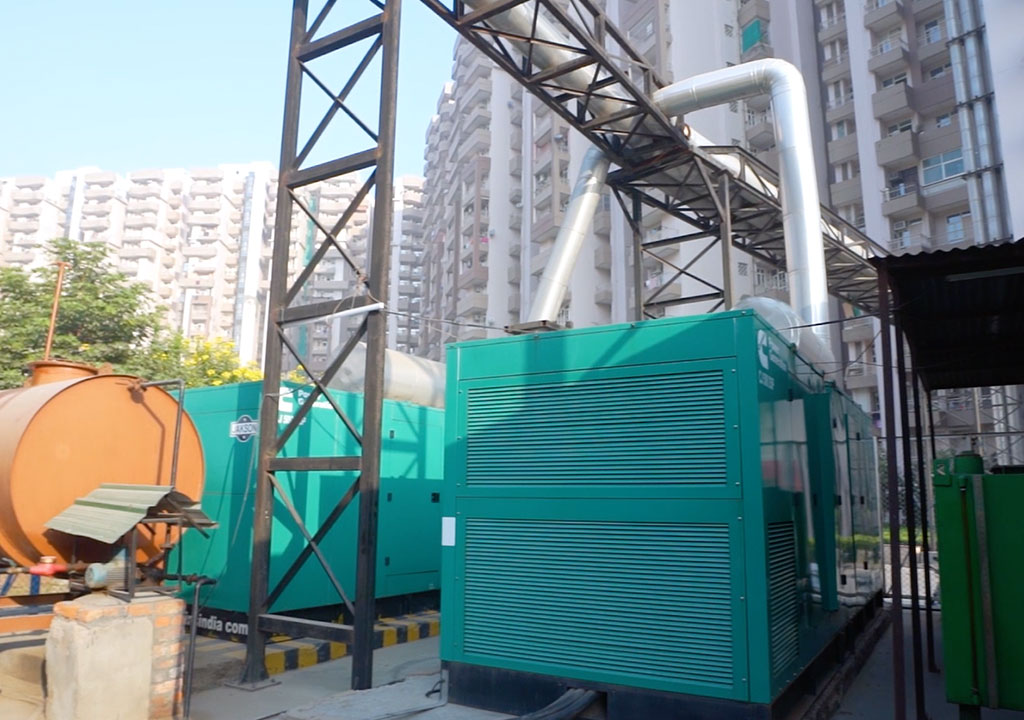Tech Take
DGs: Working, uses and monitoring tech


Through combustion, DGs convert some of the chemical energy contained in diesel fuel to mechanical energy. This energy is then used to turn a crank, which in turn generates electricity
Many cases of DG fuel theft have also been reported in residential societies. Because there is no mechanism for management to track the levels, the perpetrators get away most of the times
Diesel Generators (DGs) work through the conversion of chemical energy inside a diesel fuel into mechanical energy. The sizes of these generators vary according to the need, ranging from smaller setups to large industrial generators. Because DGs are manually operated, operational costs and fuel theft are among the concerns when it comes to the usage. A monitoring technology based on Internet of Things (IoT) may be the way forward to address and tackle these issues.
A diesel generator (DG) or a diesel genset is a device that combines a diesel engine with an electric generator to produce electricity. A diesel compression-ignition engine is typically designed to run on diesel fuel but some models are also designed to run on other liquid fuels or natural gas.
Through combustion, DGs convert some of the chemical energy contained in diesel fuel to mechanical energy. This energy is then used to turn a crank, which in turn generates electricity. Moving the wire through a magnetic field induces electric charges in it.
DGs are primarily used in areas without electricity or when power is cut due to a fault in the power grid. Those who live in remote areas and are deprived of basic necessities such as electricity can benefit from these generators.
For homes, small shops and offices, DG sizes range from 8 to 30 kW, while larger industrial generators ranging from 8 kW (11 kVA) to 2,000 kW (2,500 kVA three phase) are used for big office complexes, factories and industrial facilities.
DGs have a fuel tank capacity of 150 litres and are more fuel-efficient than gasoline generators. A 120kW diesel generator offers an efficiency of 10 to 30 litres per hour depending on the load, which is significantly better than its gasoline counterpart.
The operational cost of a DG is very high in residential societies because they are manually operated and must be turned on and off by an individual. In most cases, the generator continues to operate even after the grid supply has been restored because the person in charge of the DG is unaware of the situation. This raises the operational costs because more fuel is wasted in such cases.
Many cases of DG fuel theft have also been reported in residential societies. Because there is no mechanism for management to track the levels, the perpetrators get away most of the times. These activities result in significant financial losses for the builder.
To address these concerns, Radius Synergies International has developed an intelligent solution based on the Internet of Things (IoT) technology. The smart DG monitoring system detects when the power is on or off and directs the DG to start or stop accordingly. This smart system can also detect the fuel level of a DG and provide a real-time update to all stakeholders via the mobile app to prevent fuel theft.
Source: Xenius
-



 News3 weeks ago
News3 weeks agoKW Delhi 6 Mall Onboards New Brands
-



 News4 weeks ago
News4 weeks agoManasum Senior Living Launches IKIGAI GOA, A Senior Living Community in North Goa, in collaboration with Prescon Homes
-



 News2 weeks ago
News2 weeks agoGodrej Properties Sells Rs 3k cr+ Homes of Godrej Zenith, Gurugram, within 3 days
-



 News4 weeks ago
News4 weeks agoBridging India Divide: Top 5 Tier- 2 Cities to Focus On
-



 News3 weeks ago
News3 weeks agoCommercial Realty Gets Tech Savvy: Fast Construction, Enhanced Convenience
-



 News4 weeks ago
News4 weeks agoMultipoint Connection – A Definite Boon
-



 News3 weeks ago
News3 weeks agoRBI’s Status Quo on Key Policy Rates to Help Maintain the Real Estate Growth Momentum, Say Industry Stalwarts
-



 News1 week ago
News1 week agoOlive Announces Dhruv Kalro as Co-Founder

















